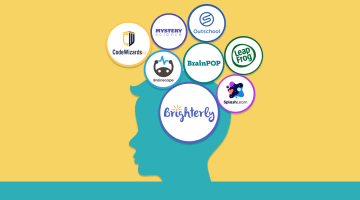The Importance of Math Intervention Programs
Updated on January 10, 2024
Math intervention programs for elementary can make a big difference for a child who cannot grasp math topics quickly and needs additional support. Some schools implement free math intervention programs to help students who experience trouble with math.
But what are these intervention programs, and is it for your child? This article will focus on different math intervention programs and offer helpful resources.
What Is Math Intervention?
Math intervention is a term that describes the support given to students for whom math is complicated. In many cases, math intervention involves assessment and intentional teaching by a math specialist to help students who need assistance with the math curriculum. Also, intervention math programs are often described as providing extra instruction and practice to students performing below grade level.
However, research based math intervention programs can also have other formats, including after-school tutoring and online classes for credit recovery or remediation. When a student’s performance falls below a certain level, usually set by the state or district, that student is at risk of academic failure. At-risk students may receive extra support from qualified instructors who help them succeed in their current coursework or future classes.
Elementary math intervention programs are often offered in an existing beginners’ math class. For example, a student might need to spend an extra hour working on math problems with their teacher or teaching assistant while their classmates attend the next class, such as science or social studies. Students may also receive this free math intervention programs for elementary in an after-school program.

How Do You Know That A Child Needs A Math Intervention Program?
When a child needs assistance with math homework, it can be challenging for parents to tell whether the problem is just in understanding the concepts taught in school or the trigger is a more severe learning disability. Thus, it would be better to get help from a qualified tutor instead of wasting time on things a kid already knows but has forgotten due to lack of practice.
Fortunately, there are a few common signs you can recognize to understand whether your child needs extra help outside school, as discussed below:
Your Child Is Failing Math Tests
It might seem obvious, but if your child regularly fails grades on tests, they are not picking up the material taught in class or do not understand it well enough to complete assessments successfully.
If this situation persists for a few weeks or even all year long, you should check if a math intervention program can help a child get back on track. It can be worrying if your child does not seem to enjoy math as much as other subjects or if they used to love math and now say they hate it.
1:1 Math Lessons
Want to raise a genius? Start
learning Math with Brighterly
 Let’s start learning Math!
Let’s start learning Math!
They Are Behind In Learning The Concepts of Math
If your kid is in elementary school and cannot perform simple addition and subtraction problems, you should enroll them in elementary students’ math intervention programs free. They have specially designed programs for students who have not been able to learn the basics of this subject. If your child cannot understand everything taught at school, it indicates problems with his reading method.
If your child keeps missing the mark when solving simple problems, they may have an insufficient understanding of math. In this situation, having a tutor to strengthen essential math skills can be helpful. Other students, terrified by math, will turn in errata like forgetting rules or symbols. Evidence-based math intervention programs can go some way toward fixing these problems by rebuilding competence and confidence.
Behavioral Changes
In both home and school, detecting sudden changes in your child’s behavior is essential. But if a once enthusiastic learner begins to get frustrated or avoids it altogether, this may be due to academic problems, bullying, or other stresses. If such changes can be quickly addressed, it will provide an environment conducive to their growth and help both emotionally and academically.
Continued Apathy For School Or Homework
This may come from things that either don’t interest your child or are difficult. Explore their interests through discussion and bring these factors into the learning process to stimulate interest. Rethinking instructional approaches or working with teachers can give learners the needed playfulness and accessibility.
Difficulty In Concentration
This may be due to learning disabilities or attention problems. Watching how your child studies and concentrates on their homework or class work provides you with valuable clues. Methods such as dividing the work into small steps or establishing set break times will help promote concentration. Working with teachers to design a personalized approach is another way of promoting the conditions for learning.
Communication Challenges
Both verbal and written communication can influence grades at school or relationships with others. The nature of these communication problems needs understanding. Working with the teachers to resolve these problems helps foster an environment of reassurance and encouragement. It even guarantees that the kids develop better social skills, thanks to frequent interaction, encouragement, and mentorship by their teachers.
Are Math Intervention Programs Effective?

Free math intervention programs are effectual in helping students reach grade-level requirements in standard areas such as problem-solving and arithmetic. The key is to ensure that a program’s designers tailor the child’s needs and shortcomings.
Such programs are effective in that they work toward building confidence in a student who can feel more comfortable participating in their regular classroom setting. Ultimately, a child can achieve better grades and get ahead of their peers in mathematics.
These programs are effective for students with learning disabilities. In the past, schools only offered math intervention programs elementary to students who struggled with math and had a disability. But now, many schools are implementing these programs for all students who perform below grade level in math. There are many different approaches to designing such programs, including whole-class, small-group, and individual interventions.
Generally, a math intervention program will involve a student working with a tutor one-on-one or in small groups. A tutor would be someone who specializes in teaching intensive elementary math intervention programs to children with learning disabilities so they can focus on individualized tasks that meet a student’s specific needs.
Brighterly is a learning platform that offers personalized lessons for young math learners. Brighterly develops programs for different grades and levels of knowledge. One-on-one lessons with a tutor are interactive and learner-centered. After every lesson, kids receive homework to repeat and remember what has been acquired during the lesson.
Conclusion
Using the best math intervention programs can play an indispensable role in bringing students up to speed. Such programs may not be the first thing teachers try when working with learners, but they are a great option to consider, especially if tutors have exhausted all other variants and still need extra support in their classrooms.
So, don’t see your child joining a math intervention program as proof that they aren’t intelligent. Instead, view the experience as a learning exercise to make your child better at translating their knowledge into key skills society needs.











